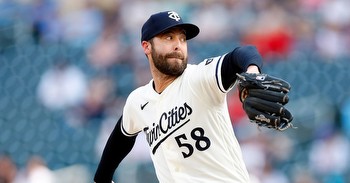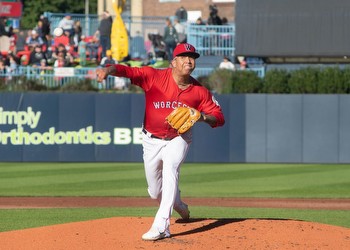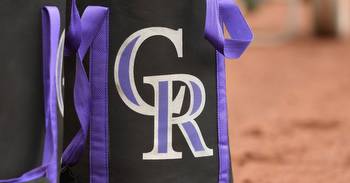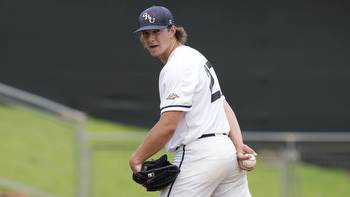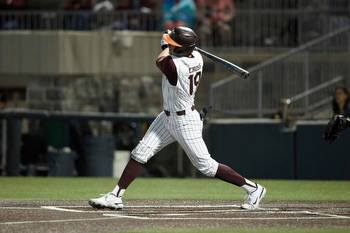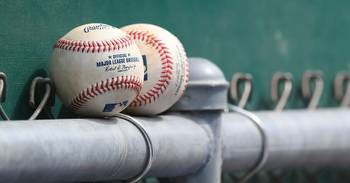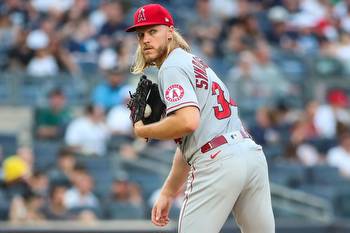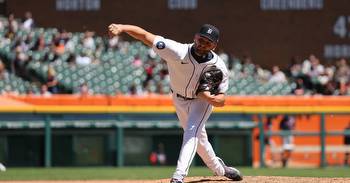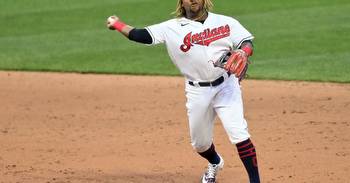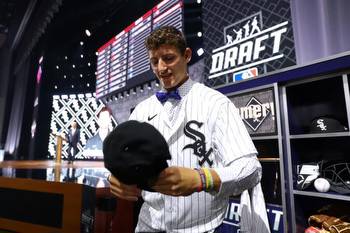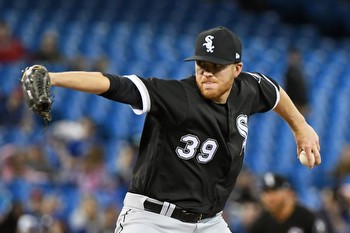Colorado Rockies prospects: No. 19, Jaden Hill
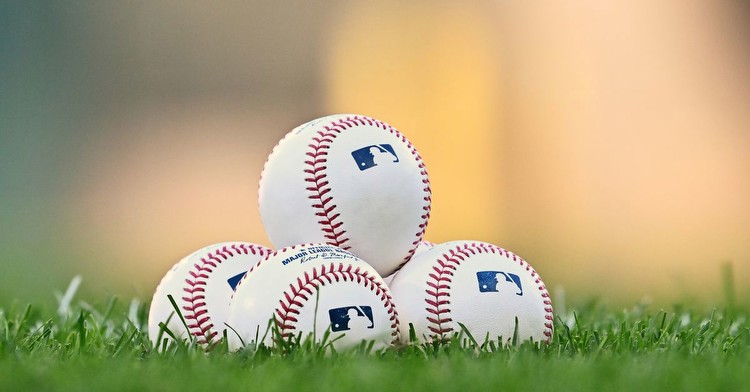
19. Jaden Hill (278 points, 21 ballots)
Hill’s ceiling as a pitcher has consistently gotten him attention from scouts as a potential top of rotation starter. At his best, the 24-year-old throws an upper-90s fastball graded in the 60-65 range, a plus changeup graded in the 60-70 range, a potentially above-average slider, and decent control. Of course there’s a reason he’s not in the top five in the system, and that’s because Hill has several high-risk traits that could preclude him from making a big league impact.
Hill was thought of as a top-five talent entering his draft year but was limited in stuff and results (6.67 ERA, 1.38 WHIP, 7.6 K/9 rate) by an elbow injury that led to Tommy John surgery for the 6’4”, 234-pound right-handed pitcher. If you’re looking for red flags, there’s injury history, strike-throwing issues, and risk he never builds up innings to be more than a reliever.
Nonetheless, the Rockies were willing to bet on the arm talent and selected Hill 44th overall in the second round and signed him to a slot bonus of $1.69M. After a brief and successful return to the mound from TJ surgery in late 2022, Hill was assigned to High-A Spokane in 2023, where he was a league-average age.
Alas, it just didn’t go well for Hill with Spokane. The Rockies limited Hill’s pitch count in outings to under 75 pitches, and in so doing he didn’t go deeper than four innings into any of his 16 starts, meaning he accumulated just 43 2⁄3 innings before getting pulled from competition by the Rockies in early August. In those 16 starts Hill was hit hard, posting a 9.48 ERA, 1.81 WHIP, and 5.2 BB/9 rate. The good news is that Hill’s xFIP was only 4.54, indicating some poor flyball luck with homers (he allowed 11 with Spokane), and a 11.7 K/9 rate.
That wasn’t the end of Hill’s 2023 though, as Thomas Harding reported in November. The Rockies worked on Hill’s entire motion in August:
“He had taken so long off from ‘T.J.’ that the lower half was inconsistent from outing to outing, and really from pitch to pitch at times,” Rockies coordinator of pitching strategies Flint Wallace said. “He came down here and worked hard at getting that dialed in. Basically, it’s getting his stuff in the zone more often. He was falling behind in counts early, but his stuff is electric.
“His changeup is a ‘plus-plus’ [well above Major League average] pitch. The slider, now that he has cleaned up some stuff, is getting back to where we saw pre-injury and on video when he was at LSU. We also know the fastball velocity is elite at times. And the improved delivery is helping him recover quicker.”
Also of note was the Rockies’ use of technology with Hill and other pitching prospects:
Hill also could be a test case for the effectiveness of a program Wallace and the organization instituted this year. Using ArmCare Technology, pitchers’ strength, fatigue and recovery data were shared with Wallace and the Minor League coaches and officials, and the information was used to lead each pitcher to an individualized routine.
The Rockies’ addition of “The Lab,” which is being built at the training center in Scottsdale and is due to open in early December, will allow Hill and other Minor and Major League pitchers to work under controlled conditions and record data that can be used to assist in performance and health throughout the season.
Hill made 11 appearances (all in relief) in the Arizona Fall League. This time, the results were much better, as Hill allowed four earned runs on six hits and four walks while striking out 13 in 11 ⁄3 innings (3.18 ERA, 0.88 WHIP, 3.2 BB/9). Those numbers are much more palatable, though Hill wasn’t asked to get too many outs per appearance.
Here’s some video of Hill from the AFL courtesy of Baseball.:
FanGraphs slots Hill 19th in the system with a 40 FV grade in June 2023:
It’s now been about a year since Hill returned from his TJ rehab and his strike-throwing has remained well below average. He’s still sitting 94-98 mph, but his heater’s shape and Hill’s scattered command of it causes it to play down. His slider has caught up to his changeup quality and has maybe even surpassed it because his feel for finishing it is more consistent than his change. Even with the round-down elements of his fastball, Hill’s secondary stuff is good enough for him to be a late-inning reliever if he can hone his command, but things have been rough enough for long enough now that I’m not projecting that to happen anymore.
Hill ranks 30th in Colorado’s system at MLB.com as a 40 Future Value player despite a 60 grade on the fastball and change-up and a 55 on the slider:
His fastball is in the mid-to-upper 90s, and he’s continuing to work on getting a little more run on the pitch. His changeup is still his best secondary, and it’s at least plus, a mid-80s offspeed offering with tumble that misses a ton of bats. The slider has been inconsistent, but it’s in there, with belief it can be at least an average pitch in time.
More than anything, Hill needs innings. The Rockies will continue to be cautious in the near term so he can get accustomed to the professional routine of being in a rotation. He has the chance to start, given his stuff, size and general feel for strike zone, but the first step will be getting him through a healthy season on the mound.
Keith Law of the Athletic ranked Hill 10th in the system in February 2023:
[Hill] came back this summer to make ten short rehab starts and showed the same mid- to upper-90s velocity with a plus-plus changeup he had before the surgery. He needs to get any consistency on the slider, but more than anything, he has to stay healthy — he threw just 39 innings in his two non-pandemic years at LSU, even though he’s close to 250 pounds and looks like he should be more durable. It’s truly No. 1 starter upside but he has so little track record of health that his probability of getting there is extremely low.
The error bars are wide when forecasting Hill’s future impact, though the upper bar seems to be lowering with every difficult outing and the seeming trend toward the Rockies making him a reliever as Hill’s Rule 5 eligibility approaches after the 2024 season.
The fact remains, though, that if his top-of-rotation stuff is able to be carried deep into games, he might well be Colorado’s best pitching prospect (firmly in the system’s top five players). The word “if” is doing a lot of heavy lifting in that sentence, though. Hill is a risky pitcher not only for injury, but also for role because it’s not a lock that he stays as a starter either. As a reliever, Hill could move quickly; but if the Rockies want him in the starting rotation, he has to demonstrate that he can be healthy and effective with something approximating a starter’s workload.
I always have trouble ranking these types of boom/bust prospects, and with the difficult season Hill had I’m closer to worried than intrigued. I slotted Hill 18th on my list with a 40 FV grade due to the upside and the late inning reliever fallback, but a bona fide healthy and effective season in a starting rotation gets him into the top 10 easily.

